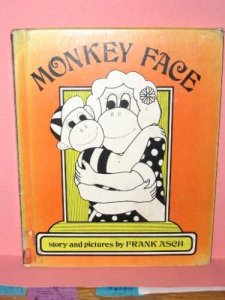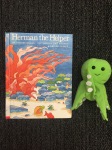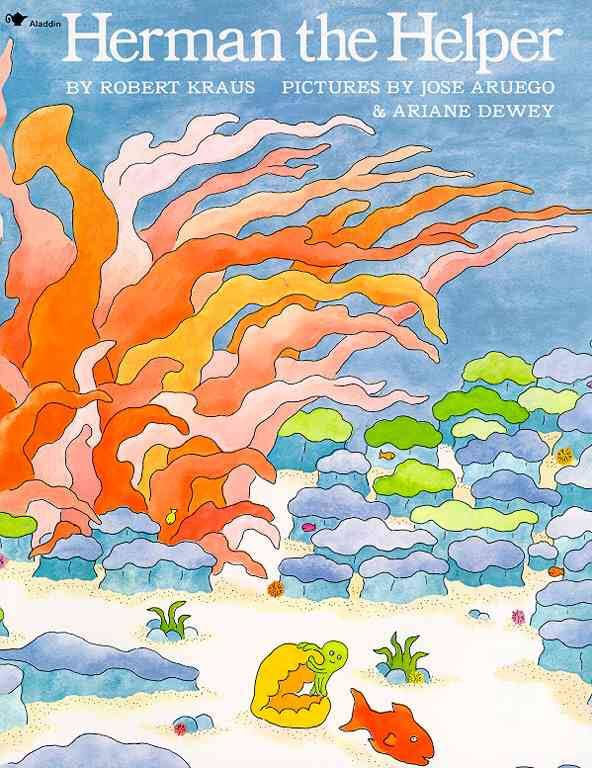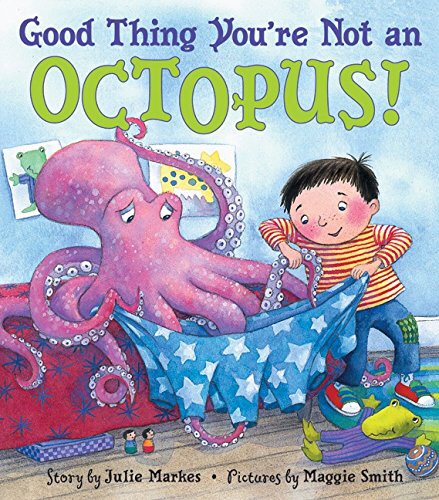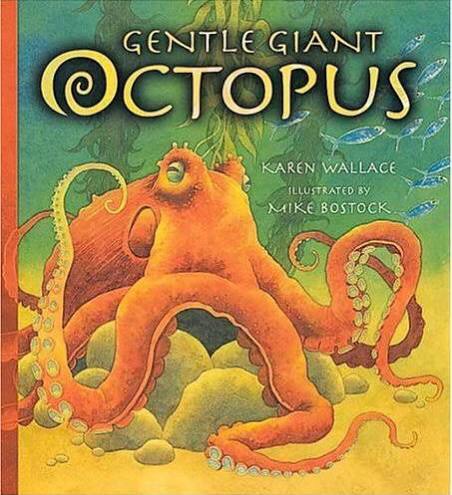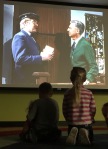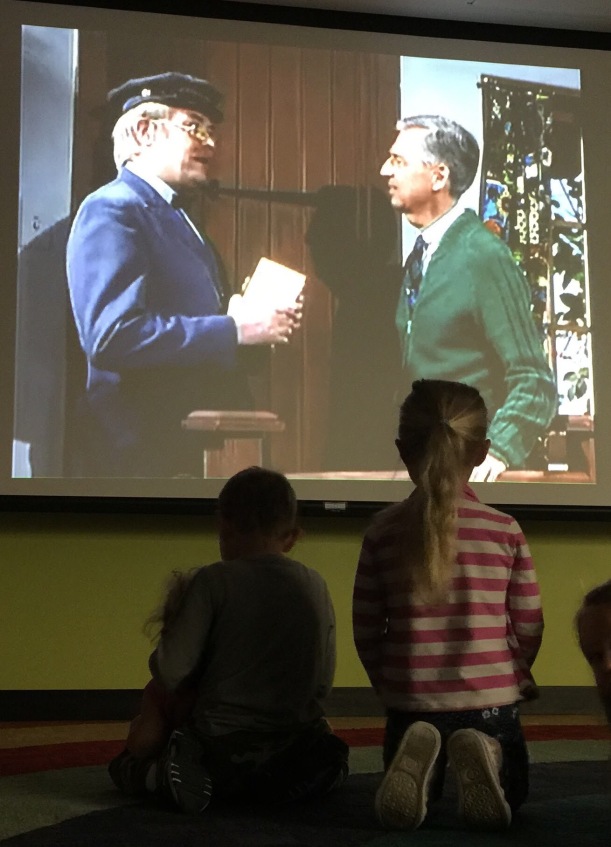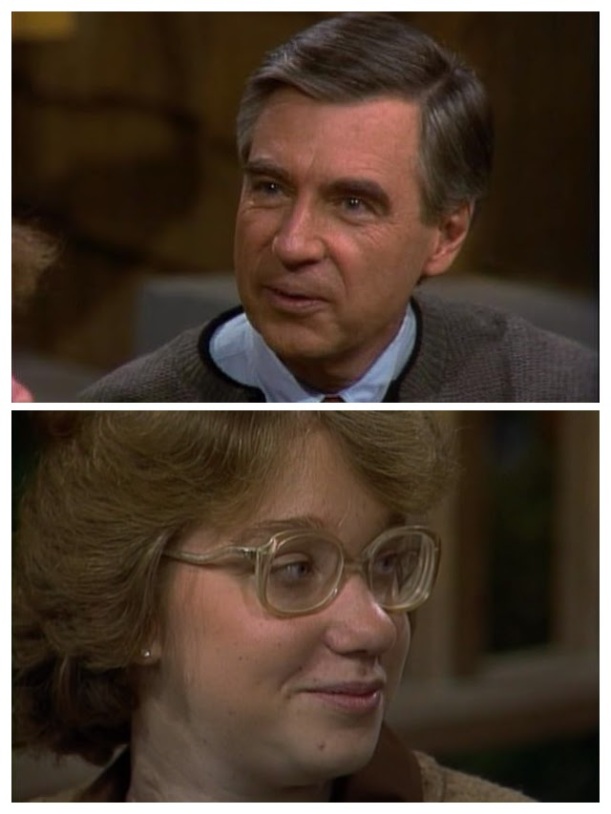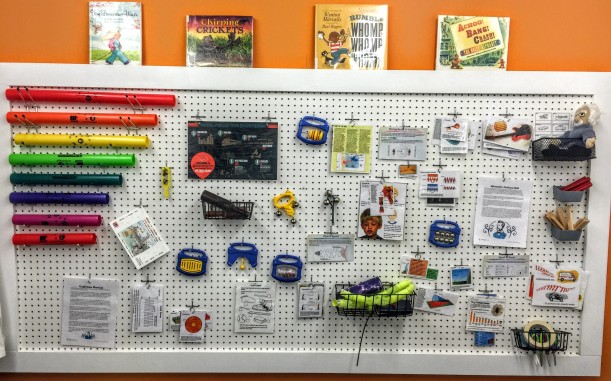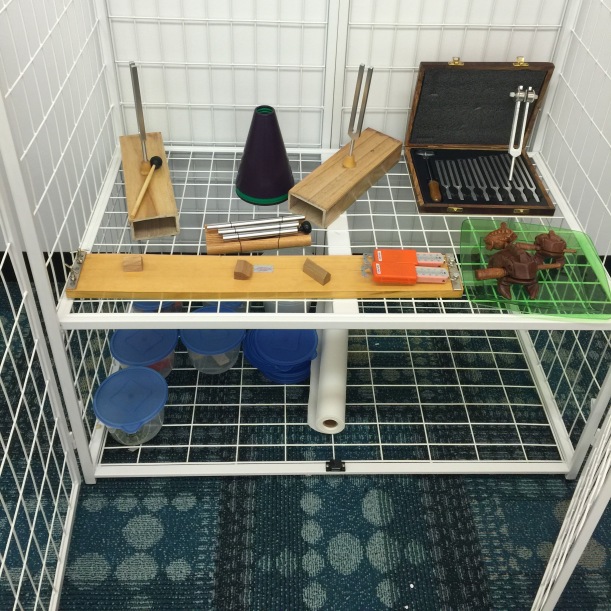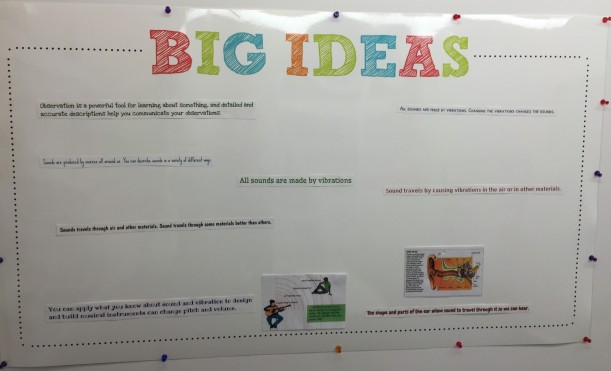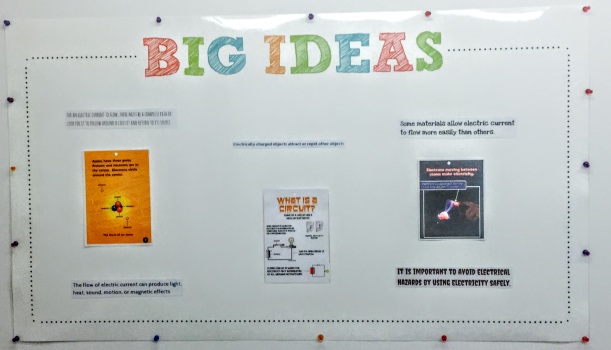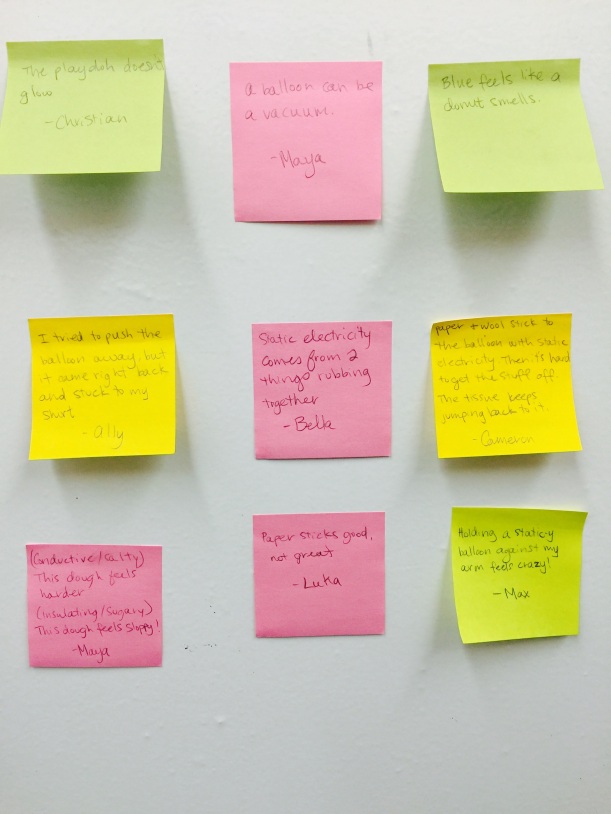
As a librarian, I’m always looking for new ways to get kids excited about reading and learning. Recently, however, I’ve been turning to an old favorite for new ideas: Mister Rogers’ Neighborhood (MRN). For more than three decades, Fred Rogers sent a simple, yet powerful, message to children everywhere: “I like you just the way you are.” I was a loyal Mr. Rogers fan growing up. So when Amazon added more than 300 episodes to their streaming services I decided to revisit my favorite television neighbor.
I expected to revisit a familiar, yet dated, childhood hero. I thought I’d watch one or two episodes, and be done with it. But I found myself mesmerized from the opening song to the closing credits. I realized I was staring into a treasure trove of ideas and early learning strategies that are every bit as relevant today as they were in 1968, 1978, 1988, 1998, and 2001 when Fred Rogers signed off on the series finale. So I decided to design a library program where children and their grownups could experience the awesomeness that is Mister Rogers’ Neighborhood in the library.
After a year of trial and error–and quite a bit of research–I have developed a process that turns this classic kids show into a simple low-cost program that kid and their grownups love.
I’ll break down the post into 3 sections: Selecting Episodes, Previewing and Planning, and Neighbor Time IRL. At the end, I will lay out 5 episodes that I have used in Neighbor Time, and the activities we did in the second half of the program.
Selecting Episodes
Before I sat down to watch MRN as an adult, I assumed it was an episodic show. I started out cherry picking the episodes. I would read the descriptions, and watch the ones that sounded interesting to me. It being a particularly cold winter, I marathoned my way through 20 or so episodes out of their intended sequence before I realized I was doing it wrong. Watching all willy nilly meant I was missing out on the subtle nuances of the structure, pacing, storytelling, and continuity.
It turns out, MRN was written and produced in five-episode theme-based series. When they were in regular syndication, they always showed themes in sequence with the first episode airing on Monday, the second on Tuesday, and so on. The themes covered could be concept-focused: Big and Little, Up and Down, or Things to Wear; or they could be more social-emotional Competition, Divorce, Mad Feelings, etc. Because the ideas are interrelated in the day and in the week, watching them in sequence offers children a variety of ways to look at–and learn about–a given topic. Don’t get me wrong, every day in the Neighborhood can stand on its own. BUT when watched in sequence, you begin to see the depth with which themes are explored.
Mister Rogers never skims the surface. He always dives deeply into a topic. And yet, he somehow manages to never hit you over the head with the theme. The themes guide the show, but they never constrain the content. Mister Rogers is always putting old ideas (or songs, activities, etc) in new contexts, and new ideas (songs, activities, etc.) in familiar contexts. In some ways, you really never know where a television visit will take you. Every day is an opportunity to sing different songs, or try something new, interesting, and even weird. Most importantly, Mister Rogers never forgets to talk about important stuff. He never hurries anyone through anything, or skips a step to save time. I truly can’t find a single experience that feels cut off or abbreviated. This is something you never see in television.
So when I started planning this program, I knew I wanted to show episodes in sequence as much as possible. The PBSkids website offers nearly 50 full episodes for free on their website. In order to keep the development/planning/testing process simple, I decided to select from these episodes for now. I needed to populate four six-week sessions. This meant I needed 24 episodes to fill up a full years-worth of Neighbor Times. Luckily, PBSkids offer several themes in full, or mostly full. This left me with only a few options, which is good. After all, it’s my nature to want to show ALL THE EPISODES.
In the future, I would love to expand this program, and find a way to dip into Amazon’s extraordinarily extensive, well-curated offerings. This service offers the most variety with weekly themes in tact. But until then, I am happy that the decision was made for me. I chose the four complete themes available on PBSkids.com–“Making Mistakes”, “Music”, “Celebrations, and “Friends”–and a four-episode theme (“Helping the Environment”).
Previewing & Planning
When I get down to planning a Neighbor Time session, I watch the episode once straight through first. One of my main goals for this program is to explore effective joint media engagement (JME) strategies in the same way I utilize early literacy practices in storytime. As I watch, I take notes, transcribe my favorite quotes, and brainstorm ideas for talking points and activities. Being prepared for JME means I am ready to recognize the moments that will mean most to the kids and caregivers who attend the program regularly.
After this first viewing, I go over my notes to identify opportunities for participation and active viewing. Television visits vary greatly in terms of interactive opportunities, but each one has at least a few elements that get kids involved in the action of show. Some of these interactive moments are complete segments. One of the best examples, is a visit from the Neighborhood’s resident P.E. teacher and school principal, Marilyn Barnett.

Marilyn Barnett and Fred Rogers, lifting those knees!
Barnett showed up at Mr. Rogers’ house every once in a to show him some kid-friendly exercises. I love showing these episodes to kids. It’s a good opportunity to get up on our feet and get our wiggles out. Other interactive moments are small moments, like when Maggie Stewart teaches Mr. Rogers how to say something in sign language, or when Mr. Rogers sings one of his signature songs. Others are teeny tiny moments, just a nod or a hello, but I like to take all the opportunities I can to get kids involved.
One example of a teeny tiny moment happens whenever Mr. Rogers meets someone on a field trip. These moments stand out to me for some reason. I love the way he strides in introduces himself to the first person he sees. Then he turns to the camera and introduces us–his television neighbor–to this new friend as well. I always love these moments. In almost every case, no matter who the guest is, a world-famous Olympic champion or a line worker in a soup factory, these introductions strike the perfect note for young children: warm, friendly, and calm. The guests are never overbearing, stiff, or even awkward. It may seem like a small thing, but it never fails to captivate me. How did they manage to illicit these sincere moments from such a diversity of guests? I imagine this sort of thing is the result of deliberate direction and blocking. But I haven’t had a chance to research this yet, but maybe one day…
Anyway, I use these seemingly insignificant moments to encourage kids (by example, I don’t push) to look into the guests’ faces, and say hello back. I started doing this pretty early on in the year. The parents teased me a bit at first. But over time, even the shyest kids have joined me in these television greetings. Even if they just manage wave and smile, it seems like a good way to practice meeting new people. This can be a huge struggle for kids. It think it’s a great way to practice greetings in a safe space. The people on the screen can’t take their shyness the wrong way or put them on the spot. Like I said, I like to be prepared in advanced for all of these opportunities for active viewing, no matter how small.
After two viewings, here’s what my notes end up looking like.
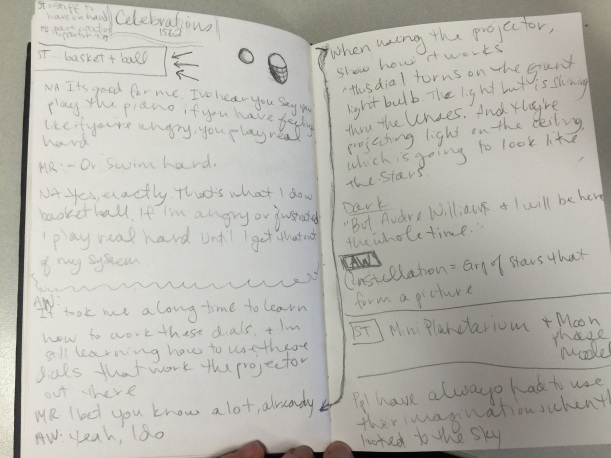
Once I have all this down, I take out Mister Rogers’ Plan & Play Book:
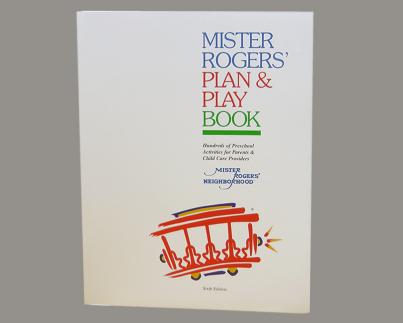
This brilliant activity book was originally created as a professional resource for teachers and childcare providers while the show was still on the air. Each entry connects the content from an episode with activities, conversation starters, and insights into child development written by Mr. Rogers, himself.
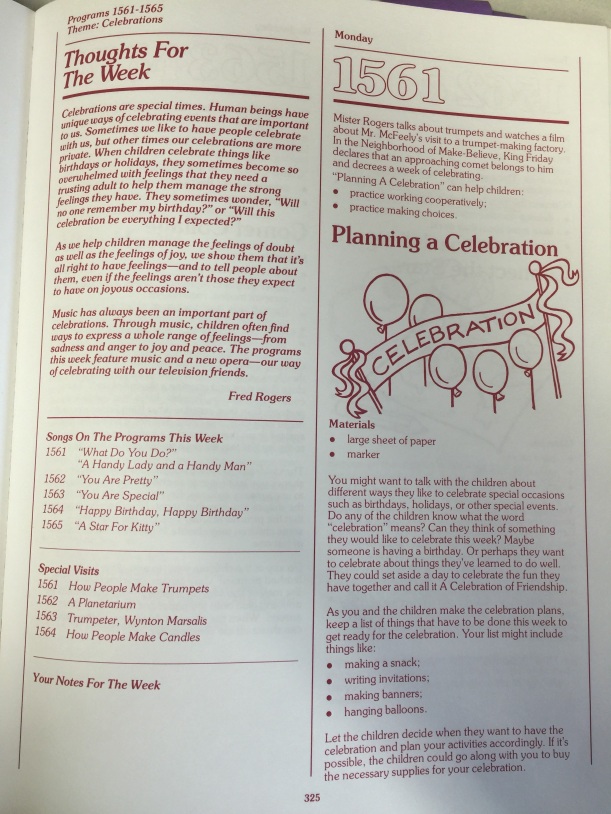
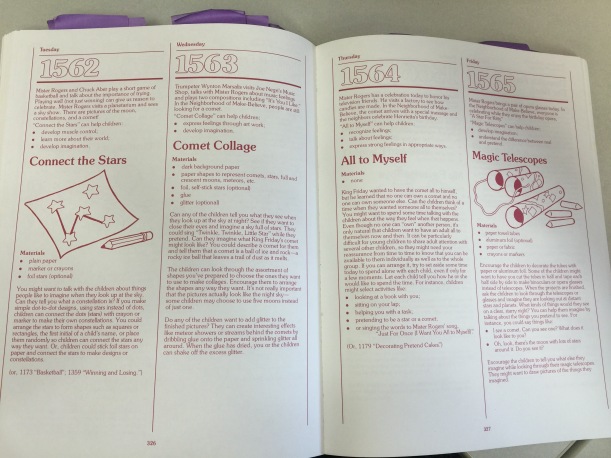
I try to match up my notes to the “Thoughts of the Week” to get a little more insight into how they are communicated through the content of the show.
Neighbor Time IRL
The set up for this program is pretty simple. Our storytime room offers a pretty nifty multimedia set-up: A/V equipment, projector, and retractable projection screen built into the ceiling. I use a laptop that hooks into the projector’s HDMI input. I set up a few chairs in the back for adults who can’t sit on the floor. Then I open the doors. I greet the kids and parents. Then I say a few words about the ongoing theme, and press play. You’re not going to believe this, but nearly all the parents stay in the room for the whole program. I didn’t even make that a rule. They enjoy the program almost as much–and sometimes more than–the kids. We watch a full episode. Then we have about 10 minutes of circle time in which we discuss what happened in the episode.
These discussions are by far my favorite part of the program. During the episode parents usually sit along the wall with their stuff, and the kids pile up in the middle of the room like a litter of puppies. For the discussion, I ask the parents to join us as we sit it a circle for a little gab session. In general, the discussion is pretty simple. I just go around the room and ask each person two questions: 1) “What was your favorite thing that happened in the show today?” and 2)”Did anyone say anything that meant a lot to you?” As you can imagine, kids always have an answer to the first question, and it’s never what you expect. I am always astounded by the level of detail the kids recall during these discussions.
For example, Episode 1561 (see below) includes a tour of a trumpet factory. The kids were all over it. During our discussion each kid cited a very specific detail of this segment as their favorite moment. One little girl talked about the women who assembles the trumpet valves. She remembered her name, described the various parts that made up the valves, the steps necessary to put them together, and the fact that her son plays one of the trumpets that she assembled. That’s a lot of information for an almost-four-year-old to keep straight, but she was clearly enamored of this particular television friend.
The second question is a bit more of a stumper, but something really cool happens when I ask it. Often, the kid often his head to the side, then looks up at his grownup. Then the grown up throws out something that she liked, and they talk it over. And that’s how the ball gets rolling. As you can imagine, this exchange often leads to some very sweet moments and warm feelings. And I must say, this is what makes MRN such a unique viewing experience for children and adults together. Words and ideas mean a lot in the Neighborhood. Feelings are felt deeply, and they stay with you. Talking about ideas and feelings is a critical social-emotional skill. It isn’t an easy thing to learn later in life if you don’t experience them early. These low-pressure discussions offer kids the opportunity to learn how to participate in nurturing conversations about important issues.
Finally, we spend the last 20 minutes doing a hands-on activity: a craft, science experiment, open play, interpretive dance, whatever seems to fit the episode. I always refer to Mister Rogers Plan & Play first for activity ideas. About half of the time the activity is ideal for Neighbor Time. But sometimes the activity doesn’t quite fit the format. They might be too long; require supplies we’re not supposed to use in our program room; or simply require a different sort of relationship than we can cultivate in a library program. In this case, I try to browse around the book looking for an alternative I can adapt to fit my needs. And if this doesn’t work, I reach into my librarian’s bag-o-tricks to find something we can all enjoy.
5 Neighbor Times for You
Here are the activities I used for a week of television visits focusing on Celebrations (1561-1565)
Week 1–How People Make Trumpets–Episode 1561
It’s trumpet time! Mister Rogers brings a toy trumpet to show his television neighbor, but it doesn’t work properly. Luckily, Mr. McFeely shows up with a replacement from the Neighborhood toy store. While dropping off the trumpet, he shows a video from a visit he made to a trumpet factory. In Make-Believe, King Friday decrees that an approaching comet belongs to him, and issues a decree that everyone must celebrate it’s arrival. Meanwhile, Henrietta Pussycat doesn’t feel festive even though her birthday is just around the corner.
Activity: Plan a party! I put a big sheet of paper up on the board, and we planned the party for the last Neighbor Time of the year. Then each child made an invitation to the party. Some kids wanted to trade invitations, and others wanted to take home their own invitation.
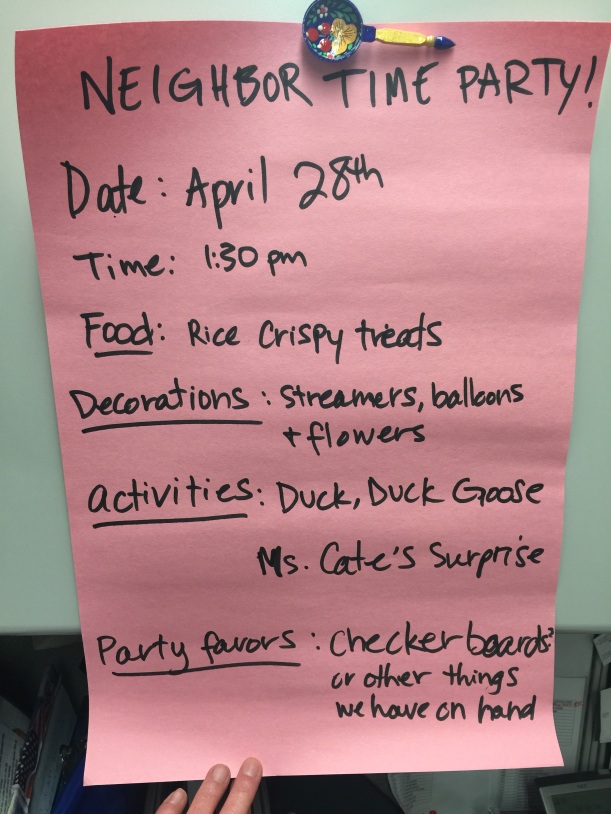
Week 2–A Visit to the Planetarium–Episode 1562
Mister Rogers arrives with a basket and a ball, and tells us that Chuck Aber is in the backyard shooting hoops. He goes outside to say hello, and Chuck shows him how to shoot a basket using an easy underhand technique. Next, Mister Rogers visits the Planetarium where Audrey Williams demonstrates the large projector she uses to show a starry sky on the ceiling when talk about stars and constellations. In Make-Believe, preparations are underway for King Friday’s comet celebration. Lady Elaine thinks King Friday is getting carried away with the comet festivities, and decides she will throw a party for Henrietta’s birthday instead. Chuck Aber tries to cheer up Henrietta, but she still doesn’t feel like celebrating the comet.
Activity: I bumped the activity for Ep. 1562 to week 3 because I wanted to see if I could get these little neighbors interested in the cosmos. I dug up my presentation from Armchair Astronomy, and used the laptop to show some great images from APOD. Then I read some of the captions, which are full of lots of great action words. I encouraged the kids to use their bodies to act out what I was reading. This was a blast. In fact, they asked if we could look at more “star pictures” during Neighbor Time for the rest of the year. I agreed, of course. After all, who am I to blow against the wind?
Week 3–Wynton Marsalis–Episode 1563
Mister Rogers arrives with a tape player. He plays a cassette recording of Wynton Marsalis playing the trumpet. Then he goes to Negri’s Music Shop where he meets Mr. Marsalis (OMG, he’s in his 20s, and looks so young.) In Make-Believe, plans continue to come together for Friday’s Comet. Lady Elaine reports that she visited the Purple Planet, where saw the comet. She insists that no one can own a comet, and they should focus their efforts on celebrating Henrietta’s birthday. Lady Aberlin talks to Daniel Tiger. He is pretty shaken up after a run-in with he thought was a monster. Fortunately, it was just Purple Panda, who apologizes to Daniel for scaring him. Then Lady A, talks with Henrietta who is sad, and wishes she was beautiful.
Activity: We used the activity that was matched with Ep 1562 Mister Rogers Plan & Play: Connect the stars. I set out a bunch of foil stars stickers, construction paper, and markers. The kids made constellations using their imagination. I found a Wynton Marsalis CD, and played it while the kids were making their craft. Then at the end, we all got together, and the kids talked about their constellations and the strange beings who live there. Then they wanted to look at more images from APOD. So we did that for a while, too.
Week 4–Henrietta’s Birthday–Episode 1564
Mister Rogers arrives with a cake that he needs to finish decorating. Someone has written a partial message in icing that reads, “I celebrate.” Mister Rogers completes it by writing “you”. Then he adds candles, and sings a new happy birthday song that he wrote. Then he shows a film about how people make birthday candles. In Make-Believe, the comet finally arrives, and King Friday is forced to accept the fact that no one person can own a comet. The stars and comets in the sky belong to themselves. And we must all share in the experience of seeing them move across the sky. He takes this disappointment surprisingly well. Queen Sarah tells him that she is proud for taking this “disappointment, and turning it into a lesson” for everyone in Make-Believe.
Activity: MRPP’s recommended an activity for Ep. 1564 wasn’t practical for a library program. Luckily, they offered an alternative that did: Decorating Pretend Cakes (from Ep 1179, p. 96). This immediately made me think of the pie art project Rebecca Zarazan Dunn did after reading Tea Party in the Woods back in January. To make this project a bit simpler to do with a big group, I used some thin paper plates we had in our craft closet.Then, I got out our big pickle jar of miscellaneous craft stuffs. It’s stuffed with scraps: yarn, paper, felt, pom poms, buttons, googly eyes, and other stuff that we save rather than putting in the trash. We take out this jar for most of our decorating crafts. I don’t have pictures of the end products the kids made–but trust me–they made some pretty impressive fake cakes.
Week 5–A Star for Kitty–Episode 1565
Mister Rogers arrives, and immediately introduces the newest Neighborhood opera, A Star for Kitty. Lady Aberlin plays a kitty who loves stars so much that she makes a special birthday wish. She points up at the tiniest star in the sky, and asks if she can have it as a birthday present. When Tiny Star (played by Daniel Striped Tiger) hears of this, he is alarmed. He doesn’t want to leave the sky, so he runs off to hide in a big tube of Superbright toothpaste. Meanwhile, Kitty is asleep. She dreams that she is taking a twinkling class so that she can twinkle like a star. She isn’t having much success when Basketball Star (played by Chuck Aber) arrives to air his concerns about Tiny Star being taken from his home. Kitty agrees to leave Tiny Star in the night sky where he belongs. Before you know it, she is shining brightly. When Kitty wakes up she has new-found respect for her own home. She hops out of bed ready to celebrate her birthday.
Activity: We had the party we planned in Week 1. I decorated the room with streamers and fresh flowers. I made some die cut leaves. I wrote a Mister Rogers’ quote on one side of each leaf. Then, I stuck a small magnet to the other side, so the kids could stick them to their refrigerators. Then, I blew up balloons, and tied the leaves to the end of each balloon string. I also made up goodie bags for the kids which included Mister Rogers coloring pages, a party favor from our big miscellaneous prize box, and a small cup with a lid so that each kid could take home a flower.
So that’s Neighbor Time. Let me know what you think.
Save
Save
Save
Save
Save
Save
Save
Save
